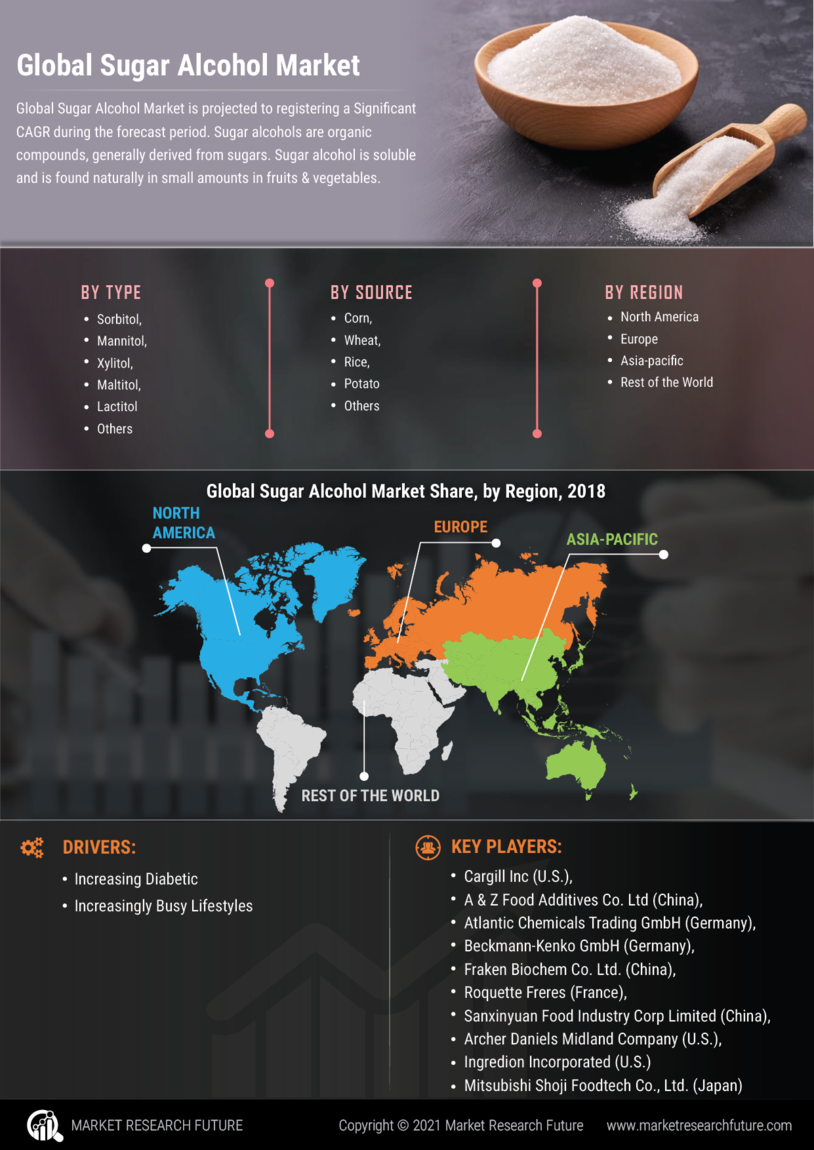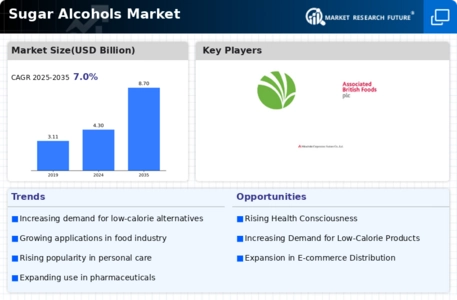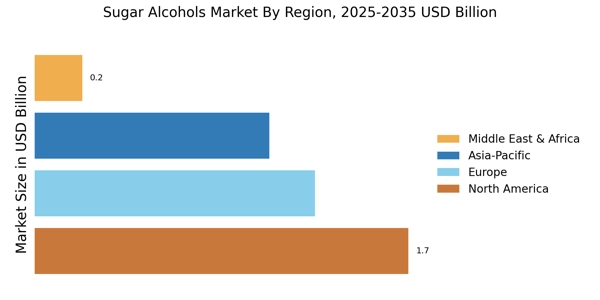Growing Awareness of Sugar Substitutes
The Sugar Alcohols Market is benefiting from a growing awareness of sugar substitutes among consumers. As more individuals become informed about the health risks associated with excessive sugar consumption, there is a marked shift towards alternative sweeteners, including sugar alcohols. This trend is particularly pronounced among consumers seeking to reduce their sugar intake for health reasons, such as managing diabetes or preventing weight gain. Recent surveys indicate that a significant percentage of consumers are actively seeking products that contain sugar substitutes, which has led to an increase in the availability of sugar alcohols in various food products. The rising awareness of the negative health impacts of sugar consumption is likely to continue driving the demand for sugar alcohols, positioning the Sugar Alcohols Market for sustained growth in the foreseeable future.
Rising Demand for Low-Calorie Sweeteners
The Sugar Alcohols Market is experiencing a notable increase in demand for low-calorie sweeteners, driven by a growing awareness of health and wellness among consumers. As individuals become more health-conscious, they are actively seeking alternatives to traditional sugars that can help manage weight and reduce caloric intake. According to recent data, the sugar alcohols segment is projected to grow at a compound annual growth rate of approximately 5.5% over the next few years. This trend is particularly evident in the food and beverage sector, where manufacturers are reformulating products to include sugar alcohols, thereby catering to the preferences of health-oriented consumers. The rising prevalence of obesity and diabetes further fuels this demand, as consumers look for healthier options without sacrificing taste. Consequently, the Sugar Alcohols Market is poised for substantial growth as it aligns with these evolving consumer preferences.
Regulatory Support for Sugar Alternatives
The Sugar Alcohols Market is experiencing favorable regulatory support that encourages the use of sugar alternatives. Various health organizations and government bodies are promoting the reduction of sugar consumption due to its association with health issues such as obesity and diabetes. This regulatory environment is conducive to the growth of sugar alcohols, as they are often viewed as safer alternatives to traditional sugars. For instance, certain sugar alcohols have been granted Generally Recognized As Safe (GRAS) status, which facilitates their incorporation into food products. This regulatory backing not only enhances consumer confidence but also incentivizes manufacturers to explore the use of sugar alcohols in their formulations. As regulations continue to evolve in favor of healthier food options, the Sugar Alcohols Market is likely to benefit from increased adoption and innovation in product development.
Increased Application in Food and Beverage Products
The Sugar Alcohols Market is witnessing an expansion in the application of sugar alcohols across various food and beverage products. These ingredients are increasingly utilized in a wide range of items, including sugar-free candies, baked goods, and beverages, due to their ability to provide sweetness without the associated calories of traditional sugars. Market data indicates that the food and beverage sector accounts for a significant share of the sugar alcohols market, with a projected valuation reaching several billion dollars in the coming years. This growth is attributed to the rising consumer demand for healthier alternatives, as well as the increasing prevalence of dietary restrictions such as low-carb and ketogenic diets. As manufacturers continue to innovate and develop new products featuring sugar alcohols, the market is likely to see further diversification and expansion, reinforcing the importance of sugar alcohols in the food and beverage landscape.
Innovation in Sugar Alcohol Production Technologies
The Sugar Alcohols Market is witnessing significant innovation in production technologies, which is enhancing the efficiency and sustainability of sugar alcohol manufacturing. Advances in fermentation processes and enzymatic methods are enabling producers to create sugar alcohols more efficiently, reducing production costs and environmental impact. Recent technological developments have led to improved yields and purity of sugar alcohols, making them more appealing to manufacturers. This innovation is crucial as it allows for the scaling up of production to meet the rising demand from various sectors, including food, pharmaceuticals, and personal care. As production technologies continue to evolve, the Sugar Alcohols Market is expected to see a surge in the availability of high-quality sugar alcohols, further driving market growth and expanding application possibilities.


















Leave a Comment